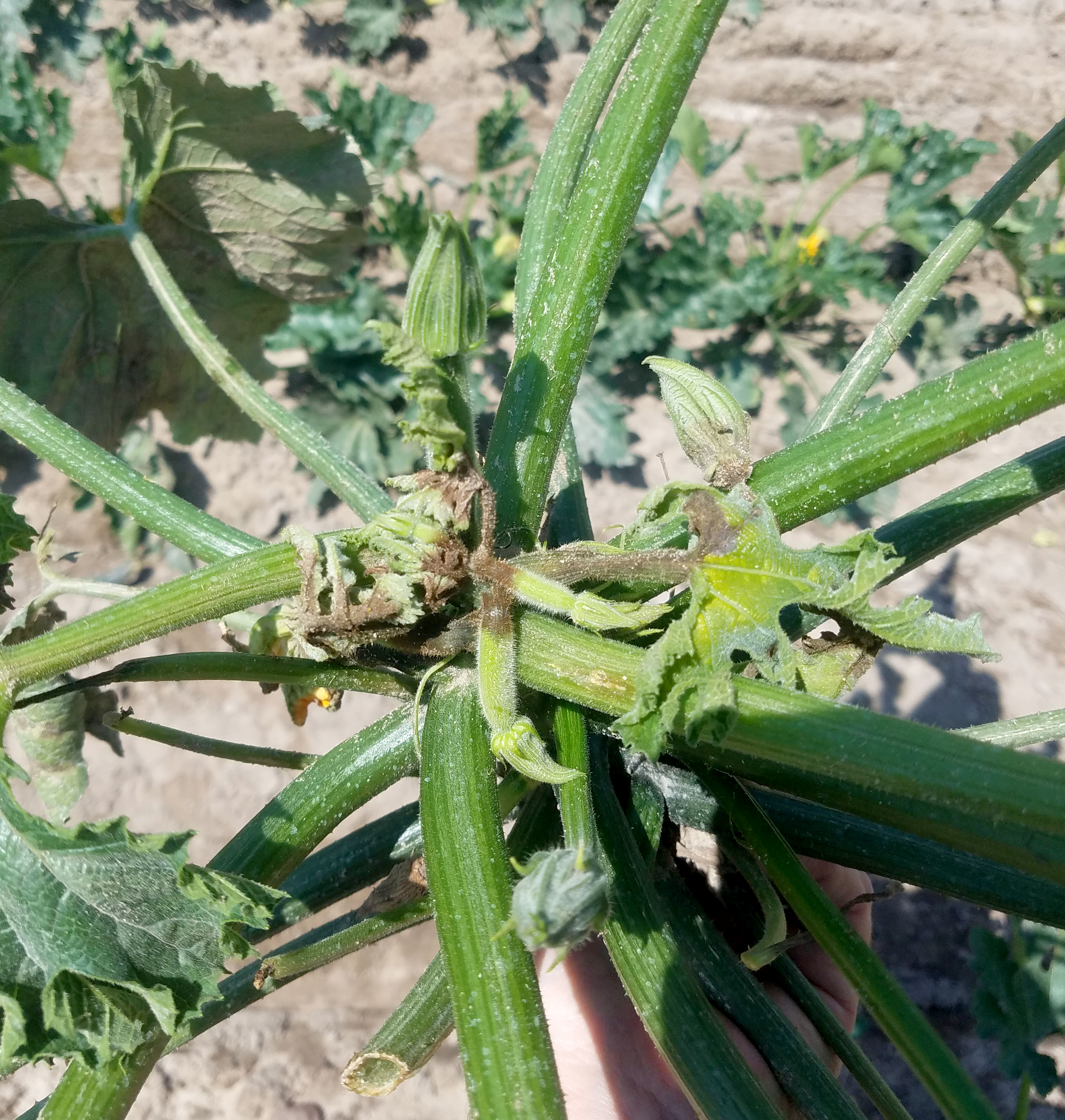West central Michigan vegetable update – Aug. 3, 2018
As good looking produce continues to be harvested, remain vigilant for diseases, which are progressing more rapidly now.

In asparagus, purple spot lesions started progressing up into the fern at Oceana County fields I visited Monday, July 30. Based on Oceana County TomCast sensors, a fungicide application would have been due Monday if monitored fields had not been sprayed since around July 20 or 21 (15 Disease Severity Values accumulated between those dates and July 30).
Consultants have also noted common asparagus beetle eggs and larvae in some fields, and Japanese beetle continues to be active. A combination of permethrin and carbaryl is the standard mix used by growers. Assail is also labelled for all these pests as well as tarnished plant bug.
In carrots, disease symptoms including leaf and petiole lesions were present in fields I visited in Oceana and Newaygo counties. If you are using the strobilurins Cabrio or Quadris, consider tank-mixing a protectant such as chlorothalonil with them. As we move through the season, remember that Merivon and Luna Tranquility are newer materials that can be considered during periods especially favorable for foliar disease.
Last week we had our first detection of aster yellows in leafhoppers collected from Oceana County processing carrots. Infectivity was 5 percent for a sample taken July 25; at this infectivity, the threshold is 11 leafhoppers per 100 sweeps for carrots. Infectivity was 0 percent for an Oceana County and Mason County sample on Aug. 1. Despite low infectivity, we have seen aster yellows symptoms developing in carrots.
In cucurbits, cucurbit downy mildew was detected at additional sites in southwest Michigan as well as in Saginaw and Arenac counties over the last week; it is on the move and cucumbers and melons need to be protected. Orondis Opti has proven most effective for cucurbit downy mildew in trials. Ranman is less effective than Orondis Opti but more effective than other products. Zampro and Elumin are “third-tier” products that may be slightly better than Gavel and Zing, which could also be considered to be in the third tier. Read more in “Downy Mildew found in Michigan cucumbers in 2018” from Michigan State University Extension.
Phytophthora capsici was causing fruit rot and leaf lesions in one zucchini field and root, crown and petiole rot in other fields after last week’s wetter weather. When it sporulates, this disease produces a powdered sugar look on infected fruit that is not “cottony and puffy.” Orondis Ultra (zero-day pre-harvest interval) and Ridomil Gold Bravo (zero-day pre-harvest interval) are “A-team” products for protecting cucurbits—note, there may be Ridomil resistance in areas with a history of using mefenoxam/metalaxyl. Revus (zero-day pre-harvest interval) and Presidio (two-day pre-harvest interval) are “B-team” products. There are other versions of Ridomil, but they have longer pre-harvest intervals, which makes them hard to use in zucchini, but possible for winter squash.

This zucchini plant in a field with Phytophthora had blighted petioles and female flowers.
If you see Phytophthora developing in part of a field, consider disking under that section of the field and a surrounding firewall of healthy looking plants to slow the spread. This in combination with rotating the above products with good spray coverage (30-plus gallons per acre spray volume) at seven-day intervals can help slow this disease.
For onions, read Mary Hausbeck’s late-breaking article on products showing good efficacy for Stemphylium in her 2018 trial.
For potatoes and tomatoes, no late blight has been detected in Michigan to date. Early blight is showing up in some locations, which is not surprising given weather over the past few weeks.
For sweet corn, check your corn earworm traps Monday morning. Insect Forecast predicts a low to moderate risk of a flight, the first real risk of a flight this season. Bird damage is frustrating growers across the state. Read a nice report from Cornell University on bird control measures. This is definitely worth a read, even if it only helps you prepare for next year’s “battle with the birds.”



 Print
Print Email
Email




